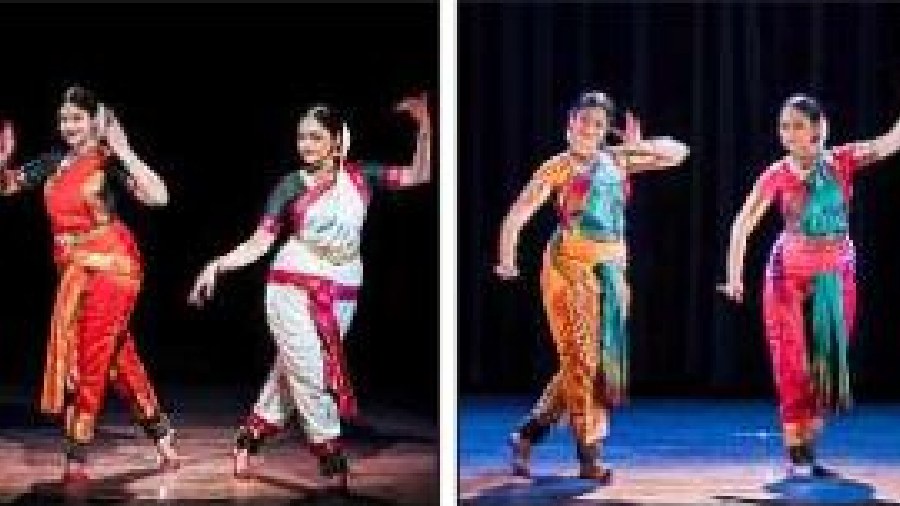R ama Vaidyanathan and her daughter and disciple, Dakshina Vaidyanathan Baghel, are dazzling Bharatnatyam dancers. Their recent duet performance, Dwita, presented by Taal Connect atthe ICCR auditorium, packed great effervescence into their impressively virtuosic dancing. Their onstage partnership left some extraordinarily memorable moments, powered by Rama Vaidyanathan’s luminous choreography,the extraordinary aesthetics of her dance design,the fluidity of the architecture created by the dancers’ graceful movements and their fantastic energy.
The evening opened with a duet piece on Lakshmi and Saraswati, in which the two sister goddesses were shown as two sides of a coin. A varnam followed, in which Dakshina presented a woman making an unabashed declaration of love to Lord Nataraja. Rama Vaidyanathan’s solo piece after this was about a woman’s prowess in love compared to that of Lord Venkateswara.In the best tradition of Bhakti poetry, the woman emerges victorious over her paramour. An ancient Sangam poem about a mother-daughter relationship was performed by both dancers before they concluded with a tillanam, a confluence of a tillana and a keerthanam.
The first piece held the promise of a layered exploration of the very distinct identities of the two goddesses. The dance was a compelling composition in which the two performers mirrored each other’s movements, although,true to their iconographies, each was represented in her characteristic colour: Lakshmi in red and Saraswati in pristine white.
The duet about a mother watching her grown-up daughter with an increasing sense of loss was an excellenttranslation of a poem into another form of expression.It was visually delightful, but one wishes thatit had ventured into psychological spaces beyond the scope of the textto interrogate the fraughtideas and shifting perspectives of a relationship whose dimensions are changing on both sides. This would have made the work rewardingly complex. With the great gift of formal and technical creativity, Rama Vaidyanathan has always told stories evocatively. One wishes they were more uninhibitedly contemporary too.











